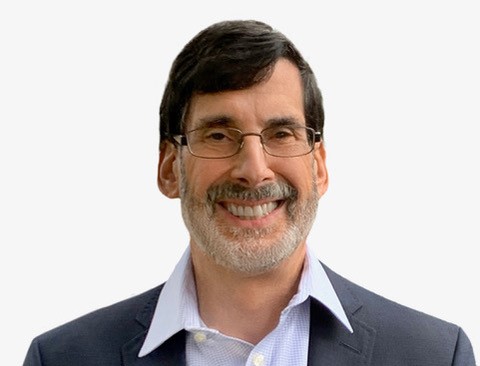BY KIM BELLARD
We depend on it. Indeed, our daily lives are unimaginable without it. The trouble is, it’s become unreliable. Lives have been lost because it wasn’t performing when it needed to be. It’s built around large facilities that are often decades old. Parts of it don’t communicate/coordinate well with others. Its workforce is aging and burnt out. There is no person or agency charged with ensuring its resiliency. It badly needs to be rethought for the 21st century.
Oh, you thought I was talking about our nation’s power grid? I was talking about our healthcare system.
The parallels are striking, and concerning. They’re huge industries, based on early 20th century approaches, and beset by 21st-century challenges to which they may not be easily adaptable. If we don’t manage their evolution to the 21st century right, we’re dead. Literally.
The power outages in Texas last year caught everyone’s attention. Texas prides itself on being an energy producer, but its power industry was caught flat-footed by “unexpected” winter weather that many had, in fact, predicted. People went for days or even weeks without power.
Oh, that’s Texas, people elsewhere might say. They hate regulations, they love low prices, their power grid isn’t (for the most part) connected to other grids, so the failures were not really surprising. Maybe, but it’s not just Texas. The Wall Street Journal reported:
Large, sustained outages have occurred with increasing frequency in the U.S. over the past two decades, according to a Wall Street Journal review of federal data. In 2000, there were fewer than two dozen major disruptions, the data shows. In 2020, the number surpassed 180.
In fact, the article says, “Utility customers on average experienced just over eight hours of power interruptions in 2020, more than double the amount in 2013.” Our power plants and transmission lines are aging badly, we have a phobia of nuclear that is also starting to apply to coal as well, climate change is throwing more extreme weather at us, and many of the renewable options (solar, wind, geothermal) are not quite ready for prime time yet.
So, get a generator. In fact, many people are. That’s fine, if you have the money (often $10,000+), can get the fuel and can keep the generator in working order, and will only need them for limited amounts of time. That’s a lot of “ifs.”
That’s where microgrids come in.
According to Microgrid Knowledge,
A microgrid is a self-sufficient energy system that serves a discrete geographic footprint, such as a college campus, factory, hospital complex, business center, military installation, or neighborhood. Microgrids can operate independently from the grid using power generated on-site; they can also be used for backup power. Microgrids are designed to operate consistently in both “blue sky” and emergency situations supported by a range of energy resources, such as renewable energy, energy storage, combined heat, and power or generators.
Their definition somewhat snidely concludes: “It’s easy to know which buildings have microgrids. They are the ones lit up during grid outages while surrounding buildings remain in the dark.”
A Chicago neighborhood is about to become “the country’s first neighborhood-scale microgrid” – one that proponents believe “could serve as a model for utilities and communities across the country.” The US Army plans to have microgrids on all of its 130 bases worldwide by 2035. Many universities, hospitals, airports, and business parks have already developed microgrids. They are an idea whose time has come.
Healthcare needs to literally join in. If there’s a hospital, nursing home, pharmacy, dialysis center, or other health care facility that hasn’t already become part of a microgrid, it’s time. Those 1960’s-era backup generators are not going to cut it.
Healthcare needs to figuratively join the microgrid movement. Think of hospitals as the traditional power plants, the loci of the healthcare system. Everything revolves around them, especially as they’ve bought physician practices, developed more outpatient facilities, and consolidated. They control how healthcare is practiced and at what cost in their community/region. They power the system.
That’s worked for us, in our dysfunctional U.S. healthcare way, but the cracks are showing. We don’t like how much we’re paying, we’re not seeing that monopolies/oligopolies are getting us higher quality care, and in the pandemic, hospitals did not prove to be enough. Their staff – which had already been stressed by staffing issues/EHRs/other problems — were overwhelmed, and started leaving. Patients stacked up in hallways, there wasn’t enough of some critical equipment/supplies, dead bodies had to be held in refrigerated trucks.
We’re effectively seeing healthcare’s versions of brownouts, or even blackouts. If there is one thing our healthcare system is not, it is resilient.
A healthcare microgrid would more effectively keep people out of hospitals. It would rely less on physicians, especially specialists. It would be community-based. It would be available 24/7, and be able to flex capacity as needed. It would be “smart,” and incorporate as many 21st century technologies as possible, such as home monitoring. Unlike actual microgrids (but more like most power grids) and unlike current medical practice, it would freely cross city/state/regional lines.
Telemedicine is an example of what should be included in microgrids. The pandemic taught us the value of telehealth, but lots of existing rules had to be waived for that to happen. Those rules are being reimposed, just as many of us are going back to seeing physicians in person. Some hospitals are bold enough to impose facility fees for telehealth visits. Those are all signs that telehealth is not part of a microgrid; it’s being coopted by the power plants – er, hospitals.
Similarly, are we really taking advantage of nurse practitioners or physician assistants can do? Why do we even think of nurse practitioners as “nurses” or PAs just as assisting physicians? Do we give pharmacists as much authority as their training would allow for?
And, of course, when are we going to get AI that can be our first line of medical advice, and perhaps more?
These are microgrid questions. They’re not questions we should only be considered during times of extreme crisis, as the current pandemic; they are questions we should be answering for the next crisis.
The analogy is not perfect. I don’t know exactly what a healthcare microgrid would look like. But, just as I know traditional power grids are not going to be enough for our energy needs, our traditional healthcare system is not going to be enough for our healthcare needs. We need something more resilient and more localized. We need healthcare microgrids.
Kim is a former emarketing exec at a major Blues plan, editor of the late & lamented Tincture.io, and now regular THCB contributor.




Leave A Comment